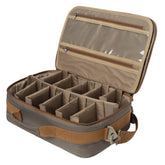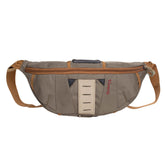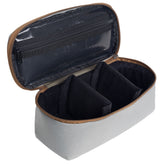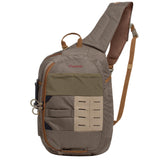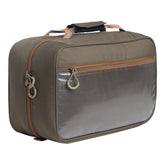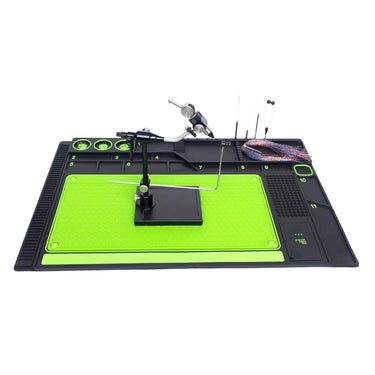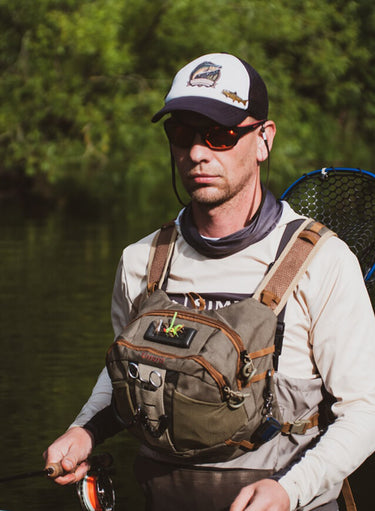Fly Reel: Essential Size Guide and Maintenance Tips for Anglers
When it comes to fly fishing, the right fly reel can significantly enhance your experience on the water. Choosing the correct size of fly reel is crucial for ensuring optimal performance and balance with your rod. I'll explore essential aspects of fly reels, including a size guide, maintenance tips, and comparisons between manual and automatic reels.

I’ve encountered various high-end fly reel brands that stand out for their craftsmanship and durability. Understanding what to look for can help you make an informed decision when investing in gear. Additionally, proper maintenance is key to prolonging the life of your reel, ensuring it performs when you need it most.
Whether you're a beginner or a seasoned angler, the choice between manual and automatic fly reels can influence your casting technique and overall fishing experience. I’ll break down the advantages and disadvantages of each type, helping you determine which option best fits your fly fishing style.
Understanding Fly Reels
Fly reels are essential tools in fly fishing, serving multiple purposes that enhance the angling experience. Their design, maintenance, and appropriate selection are critical factors in ensuring successful fishing trips.
Fly Reel Size Guide
Choosing the correct fly reel size is pivotal for optimal performance. The size typically corresponds to the weight of the fly rod and the target species. Here’s a simple breakdown:
| Reel Size | Rod Weight | Target Species |
|---|---|---|
| 1-3 | 2-6 lbs | Small freshwater fish |
| 4-6 | 6-8 lbs | Trout, bass |
| 7-9 | 8-10 lbs | Salmon, steelhead |
| 10+ | 10+ lbs | Large saltwater species |
Select a reel that balances well with your rod. A reel too heavy may lead to fatigue, while one too light could affect casting accuracy.
Fly Reel Maintenance Tips
Proper maintenance of fly reels ensures longevity and reliability. I recommend the following steps:
- Regular Cleaning: After each use, rinse the reel with fresh water to remove salt or debris.
- Lubrication: Apply a light machine oil to the drag knob and moving parts to maintain smooth operation. Avoid over-lubricating.
- Storage: Keep the reel in a protective case, away from extreme temperatures and moisture.
- Inspecting: Regularly check for any signs of wear or damage on the drag system or line.
By following these maintenance tips, I can prolong the life of my fly reel and enhance its performance during fishing outings.
Types and Features of Fly Reels
When selecting a fly reel, I focus on the key features that enhance my fishing experience. In particular, I consider whether a manual or automatic reel is more suited to my needs, as well as the performance of the drag system.
Manual vs Automatic Fly Reel
Manual fly reels require me to control the line retrieval and release. They often offer more direct feedback and a connection to the fish, appealing to many anglers. The simplicity of design, often featuring CNC machined components, results in a lightweight setup.
Conversely, automatic fly reels feature mechanisms that retrieve the line with ease. This can be advantageous during fast-paced fishing situations. While they can be heavier due to complex gearing, the convenience of not having to manually wind the reel calls to those who prefer a less hands-on approach.
Assessing Drag Systems
The drag system is crucial to my success while fly fishing. A smooth drag system allows for effective control when a fish makes a run. I often look for setups that utilize high-quality ball bearings, as these directly affect responsiveness.
Drag systems can be built into a full frame design, which enhances durability and reliability. It’s essential to evaluate these features to match the weight and type of fly lines I’m using. A good drag system gives me confidence that I can manage larger fish efficiently without sacrificing control or line integrity.
Selecting Top-Tier Fly Reels
Choosing a high-quality fly reel is crucial for an optimal fishing experience. The right reel enhances performance and durability, making it necessary to be informed about the leading brands and their offerings.
High-End Fly Reel Brands
When it comes to high-end fly reels, several brands dominate the market due to their commitment to quality and innovation. Notable names include:
-
Abel: Known for its classic aesthetics and customizable options. Their reels are built with precision and often come with a lifetime warranty.
-
Hatch: Focuses on advanced technology and materials. Hatch reels are praised for their smooth drag systems and rugged construction.
-
Orvis: Offers a range of reels that blend classic designs with modern functionality. Their versatility makes them suitable for various fishing conditions.
-
Hardy: Renowned for their craftsmanship, Hardy reels are often considered a piece of art, ideal for both performance and aesthetics.
Investing in these top-tier brands can significantly elevate my fishing gear, ensuring reliability and enhancing my overall experience on the water.



